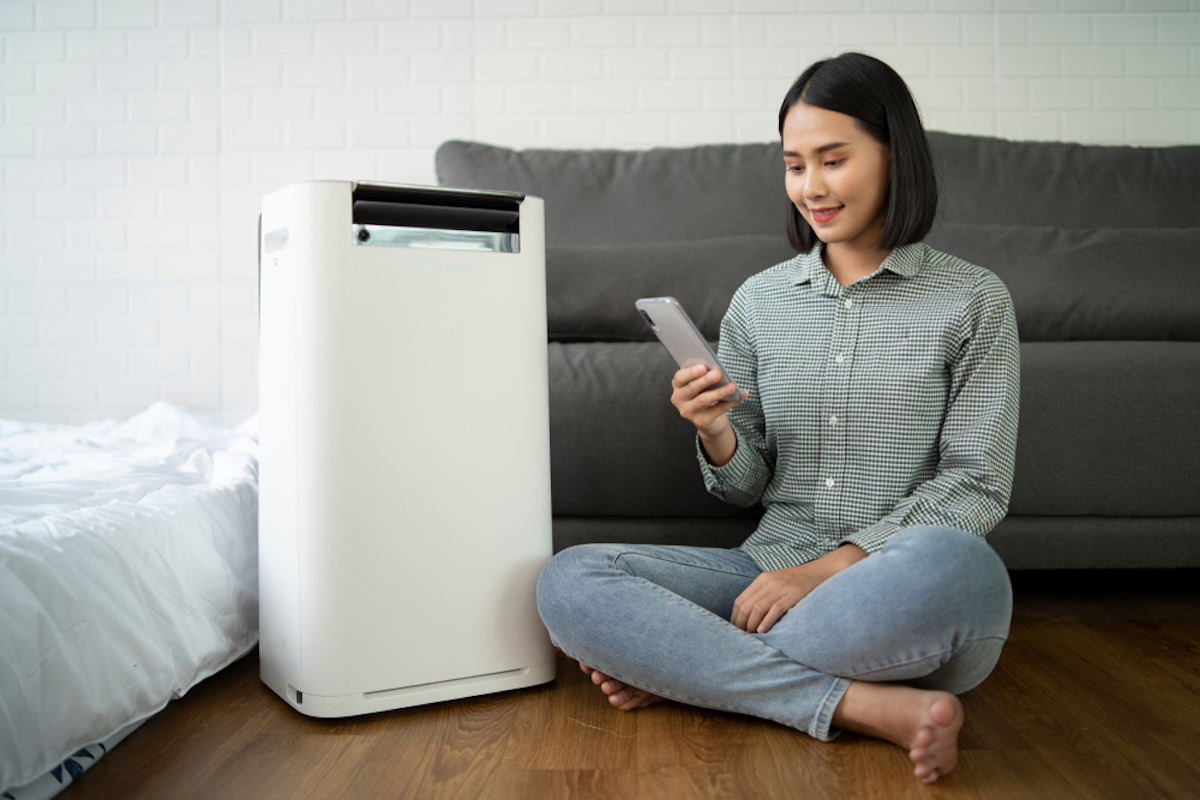“There’s sort of a ‘Goldilocks’ zone for the coronavirus, between 40 and 60 [percent] humidity, where it doesn’t survive for very long,” says Erin Bromage, PhD, an associate professor of biology at the University of Massachusetts, Dartmouth. Bromage—the author of a viral blog post outlining the risks of airborne coronavirus transmission—told CNN that when humidity climbs above 60 percent (as it does in many places during the summer), droplets become weighed down with moisture and fall to the ground. “[This] sounds like a great thing,” Bromage said. “But it actually drops onto surfaces much faster and being wet actually keeps the virus alive and infectious for longer.” Alternatively, when conditions fall below 40 percent humidity, as they do in the winter, infected aerosol droplets are able to stay afloat and travel in the air more easily. “When the humidity is lower, the air is drier and it makes the aerosols smaller,” Michael Ward, an epidemiologist at the University of Sydney, said in a statement regarding his study on winter and COVID-19. “When you sneeze and cough, those smaller infectious aerosols can stay suspended in the air for longer. That increases the exposure for other people.” RELATED: For more up-to-date information, sign up for our daily newsletter. Humidity has such a strong effect on COVID that Stephanie Taylor, MD, infection control consultant at Harvard Medical School, started a petition for the Centers for Disease Control and Prevention (CDC) and the World Health Organization (WHO) to adopt safe humidity level guidelines amid the pandemic. During a 2013 study on how infections spread in a hospital, Taylor discovered that there was a significant correlation between infection rates and the humidity in patients’ rooms. “Maintaining the indoor [relative humidity] at 40-60 percent may be an effective and cost-efficient, yet underestimated, tool to decrease the spread of infectious microorganisms,” she concluded. Luckily, there are easy ways to create the ideal, safe atmospheric conditions in your home to help you stay in that so-called “Goldilocks zone” of humidity. Bromage recommends using HEPA air purifiers and to consider a humidifier that can monitor moisture levels, keeping them between 40 and 60 percent. Even better? Find one that uses UV light to sanitize, too. “Properly balanced UV light will inactivate viruses and bacteria in the air, which just adds an extra layer to the protection coming from the air purifier,” Bromage told CNN. And for more on how coronavirus is spreading, check out 80 Percent of People Who Test Positive for COVID Have This in Common.ae0fcc31ae342fd3a1346ebb1f342fcb
